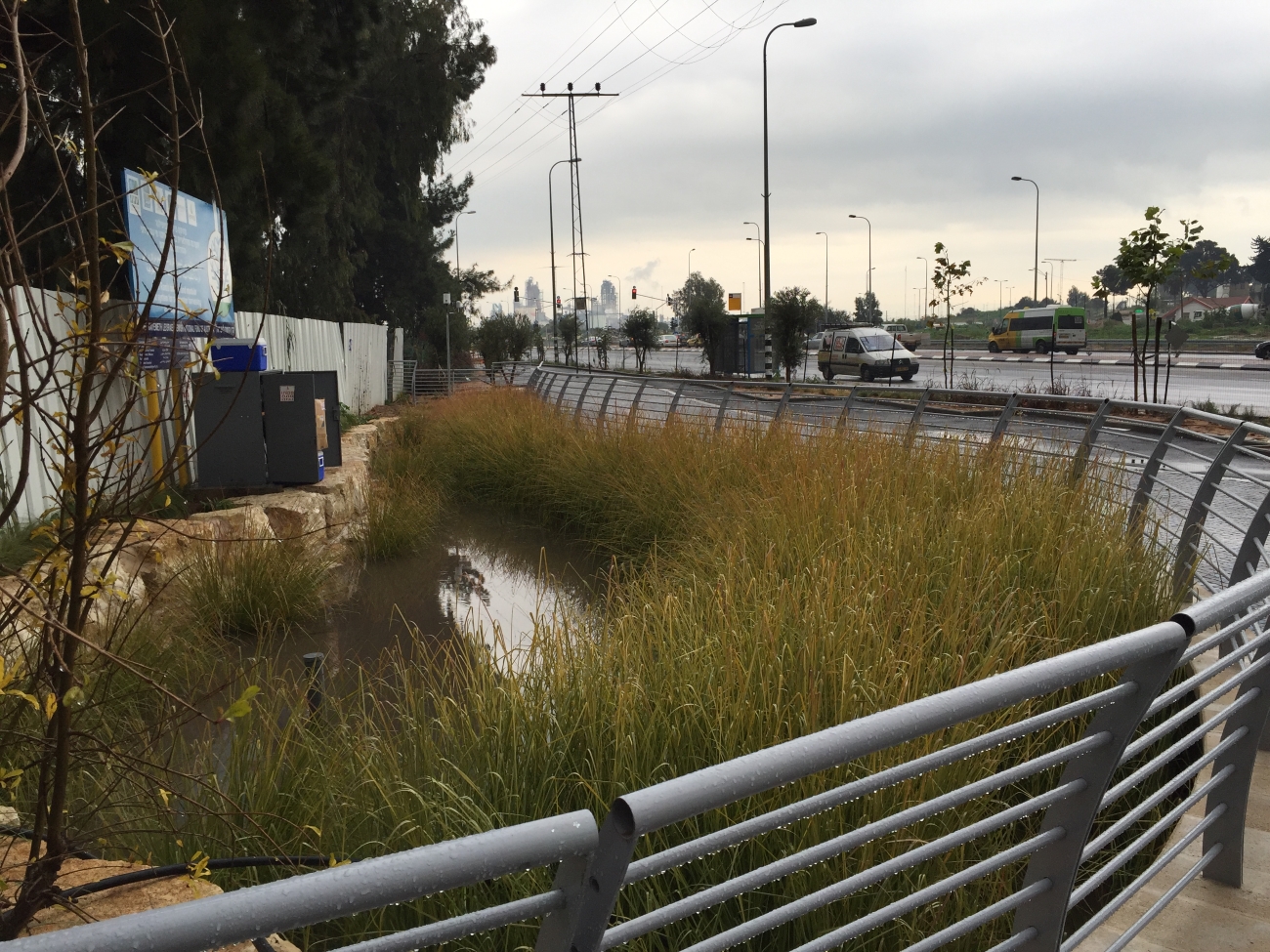
Project 2.1 comprises two sub-projects:
The first sub-project seeks to establish and demonstrate a methodology for obtaining a detailed spatial distribution of stormwater in an existing urban location, and a tool for deciding how to allocate the resource to locations where the water may be treated, stored, recharged or used. The study takes into account the size, geometry and land use patterns of catchment areas in prototypical urban typologies of Israeli cities.
The second sub-project attempts to provide a quantitative assessment of specific benefits from extensive planting of vegetation supported by stormwater harvesting and treatment in existing urban areas, with regard to pedestrian thermal comfort and conservation of energy in buildings. The study investigates by means of computer simulation the integrated effect of vegetation on air temperature, humidity, radiant exchange and wind speed – all of which affect both pedestrian comfort and building energy performance.
Work on both sub-projects proceeds in parallel. A proof-of-concept study will first demonstrate that the methodology can, in principle, estimate local-scale benefits to urban amenity from the implementation of generic WSUD (water sensitive urban design) elements, in the context of Israeli urban morphology and climate. As detailed, site-specific WSUD solutions are implemented in the proposed urban renovation plans, the climate and energy models will be updated to assess the effect of these actions.
To read and download the research report (Hebrew):
To download and read the full research booklet
“From a Nuisance to a Resource 2017” (Hebrew)

